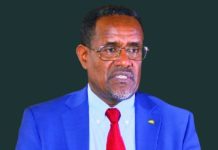DNA
ISLAMABAD, MAY 28: The FPCCI’s Businessmen Panel (BMP) Chairman Mian Anjum Nisar, who has taken the charge of SAARC Chamber of Commerce and Industry (SCCI) vice president, has said the intra-trade among SAARC countries continues to remain in the low range of just 5% of the total trade of the region while this trade in NAFTA region is over 40%, 68% in EU and 27% in ASEAN, laying emphasis on exploring the vast untapped trade potential in SAARC region.
Mian Anjum Nisar, who is also the FPCCI former president, will serve the SCCI as its vice president for the term 2023-24. The new vice president of SAARC CCI said that South Asia with its diversified resources and skilled workforce has tremendous potential to be the fastest-growing exporting region to the globe.
Anjum Nisar said that other regional associations like EU, ASIAN, NAFTA are doing very well and they are getting regional benefits but it’s still unfortunate for us, that we couldn’t utilise SAARC till now.
We have huge potential in the area of tourism, agriculture, fisheries, industries, human development and many more. It’s time we push the government of each country to seize the untapped opportunity in this region, he added.
The SCCI new vice president said that it is imperative for all to draw lessons from the successes achieved by other regional agreements, and channel their experiences of regional identity and solidarity into our efforts to propel SAARC towards new heights. It is our responsibility to find innovative and sustainable solutions to these challenges, and to work together to create a brighter future for the people of our region, he opined.
The priority will be given to enhance collaboration on sectors with high growth potential such as information technology, manufacturing, energy, tourism, and agribusiness that derive tangible results, he added.
South Asia is one of the fastest-growing economies in the world. We have a lot of potential, but unfortunately, we are still lagging behind to seize all the opportunities, he said.
Pakistan is situated in a geostrategic position in South Asia. It has a vital location because it can connect to other South Asian countries along with the Central Asian countries which are landlocked geographically. The rest of the South Asian countries are Afghanistan, Bangladesh, Bhutan, India, Maldives, Nepal, and Sri Lanka. The formation of the regional economic bloc has become an important route for the economic growth of nations. South Asia is the region with a population of 1.2 billion. Pakistan, India, and Bangladesh have greater economies as compared to other South Asian countries. According to World integrated Trade Solution (WITS) country profile, Pakistan’s total export to Asian countries is 2385650 in thousands of US$ out of a total 23,748,680.25 in thousands of US$ in 2019 which is 10.05% of the total export. The greater share of Pakistani export in South Asian countries goes to Afghanistan (14.48%), followed by Bangladesh (8.42%), India (5.35%), and Sri Lanka (3.51%). Pakistan has a minimal share of its exports to other South Asian countries like Nepal, Maldives, and Bhutan. Apart from this, the close borders with India and Afghanistan have also not achieved their potential.
He said that Pakistan’s growth trajectory can offer several complimentary advantages to our South Asian counterparts. The private sector is keen to explore business collaborations in manufacturing, agro-processing, industrial machinery and clean energy among others with value chain linkages and market prospects, he added. He said that with promising ties among the 8 member countries, SAARC has the potential of being one of the most dynamic and emerging regions in the world. Cross-border investments, simplifying customs procedures, and developing efficient logistics networks within SAARC can facilitate trade. We may closely work with the apex trade bodies and initiate country-specific and regional programs for improving the economic cooperation and capacity building of our SME’s sector and tapping the potential of women-led SMEs for regional trade, he added.
He said that SAARC CCI is the only platform for the South Asian Business Community to network, collaborate and foster partnerships with the common business people of the region.
For inclusive economic growth in the SAARC region, SAARC CCI has the responsibility to identify the existing bilateral and multilateral tariff and non-tariff barriers, connectivity, and other challenges.
It is more important that we must recognize the significance of using our regional strengths and working together towards a common vision in a rapidly changing world, he opined.
He said the private sector holds the key to unlocking this opportunity by venturing into new markets, diversifying product portfolios, nurturing cross-border business collaborations, and removing trade barriers including NTBs.
Setting up a B2B mutual trade facilitation committee of the SAARC Chamber of Commerce and Industry may be established for support, he added.
He mentioned that the world is witnessing significant shifts in the global economic landscape.
South Asia has a unique opportunity to position itself as a major player in the global trade and investment arena. The region is also blessed with immense resources, a young and talented workforce, and a growing consumer market. By rethinking our regional integration strategies, we can leverage our relationship to new heights, he added.












